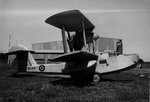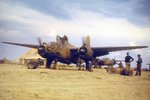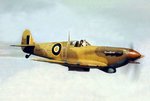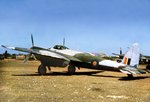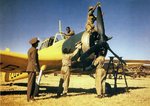- Thread starter
- #101
Brothers Leo and Vivian Walsh built and flew a Howard Wright biplane in 1910 and flew it on 5 February 1911. When in August the aircraft crashed it was rebuilt by the brothers into what was in reality an entirely new aircraft, with a streamlined nacelle between the wings, which now had swept outer bay, while the canard was replaced by a conventional tailplane. During 1914 they began construction of a two place flying boat similar to a Curtiss design. After the war broke out, the brothers founded the New Zealand Flying School in October 1915 to train men for the Royal Flying Corps. The Curtiss based design was modified with dual controls to become a trainer and first flown 1 January 1915. The first class of three included the fighter ace, Keith Caldwell. Classes were always small but - in contrast to overseas training - comprehensive.
Due to the difficulties obtaining suitable training aircraft, the Walsh brothers decided to build their own trainers, initially based on this pattern. Over the next four years they produced a series of four flying boat designs, evolved from, but bearing little resemblance to the original Curtiss model. The last of the Walsh Brothers designs, the Type D of 1919 was an aerodynamically and hydrodynamically advanced machine, with a powerful Beardmore engine. The flying school struggled to gain clients after the war, and all assets of the flying school were acquired for the NZPAF in 1924. All Walsh brothers flying boats had been made for the use of the school, not for sale. The NZPAF had a landplane based training programme using the Avro 504K and had no use for the flying boats. The survivors are believed to have been burnt on the Auckland waterfront, however there are "lost treasure" stories that these and some of the other machines used by the flying school are stored on a defence force base at Devonport in tunnels bricked up after the Second World War.
Due to the difficulties obtaining suitable training aircraft, the Walsh brothers decided to build their own trainers, initially based on this pattern. Over the next four years they produced a series of four flying boat designs, evolved from, but bearing little resemblance to the original Curtiss model. The last of the Walsh Brothers designs, the Type D of 1919 was an aerodynamically and hydrodynamically advanced machine, with a powerful Beardmore engine. The flying school struggled to gain clients after the war, and all assets of the flying school were acquired for the NZPAF in 1924. All Walsh brothers flying boats had been made for the use of the school, not for sale. The NZPAF had a landplane based training programme using the Avro 504K and had no use for the flying boats. The survivors are believed to have been burnt on the Auckland waterfront, however there are "lost treasure" stories that these and some of the other machines used by the flying school are stored on a defence force base at Devonport in tunnels bricked up after the Second World War.


